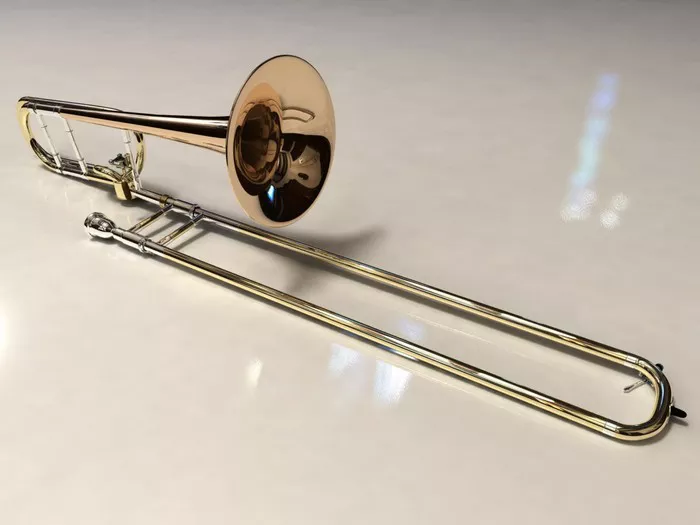The trombone, with its distinctive slide and bold brass tones, is a versatile and expressive instrument. Proper tuning is essential to ensure that it harmonizes seamlessly with other instruments in an ensemble. Whether you’re a beginner or an experienced trombonist, understanding the nuances of tuning is crucial for achieving a clear and resonant sound. In this comprehensive guide, we will delve into the intricacies of tuning your trombone, exploring the techniques, tools, and considerations that contribute to achieving pitch-perfect harmony.
1. Understanding Trombone Basics
Before diving into tuning, it’s essential to have a fundamental understanding of how the trombone produces sound. Unlike many other instruments, the trombone has a slide instead of valves, allowing players to change the pitch smoothly and continuously. The pitch is primarily controlled by the length of the slide, with longer lengths producing lower pitches and shorter lengths yielding higher pitches.
2. Tuning Slide Basics
The tuning slide is a key component of the trombone that allows players to make overall adjustments to the instrument’s pitch. Typically located near the bell of the trombone, the tuning slide can be extended or retracted to fine-tune the pitch. Pulling the slide out lengthens the overall tubing, resulting in a lower pitch, while pushing it in shortens the tubing for a higher pitch. Understanding how to use the tuning slide effectively is fundamental to achieving accurate tuning.
3. Importance of Ear Training
Ear training is a crucial aspect of tuning for trombonists. Developing a keen ear for pitch allows players to identify when the trombone is in tune with other instruments and adjust accordingly. Listening to reference pitches, playing alongside a tuner, or practicing with other musicians can help refine your sense of pitch. Ear training is an ongoing process that enhances your ability to make precise adjustments while playing in different musical contexts.
4. Use of a Tuner
While ear training is vital, using a tuner provides an objective and visual reference for tuning your trombone. Electronic tuners can be attached to the instrument or placed nearby to monitor pitch accuracy. When using a tuner, aim to match the desired pitch by adjusting the length of the tuning slide. This visual aid complements your ear training, helping you achieve and maintain accurate pitch while playing.
5. Warm-Up Exercises for Tuning
Incorporating specific warm-up exercises into your practice routine can improve your tuning skills. Start by playing long tones and simple scales, focusing on producing a clear and steady tone. Use a tuner to monitor your pitch and make adjustments as needed. Gradually expand your warm-up routine to include intervals, arpeggios, and challenging passages, all while staying attentive to pitch accuracy. Consistent and deliberate warm-up exercises set the foundation for precise tuning during more complex musical pieces.
6. Ensemble Playing and Section Tuning
Trombonists often play in various musical ensembles, and achieving collective tuning within a section is paramount. Section tuning involves adjusting the pitch of the entire trombone section to ensure a cohesive sound. Begin by tuning to a reference pitch from a designated instrument, such as a piano, and make adjustments collectively. Regular communication and a shared commitment to pitch accuracy contribute to a unified and harmonious ensemble sound.
7. Considering Temperament
Understanding the concept of temperament is essential for trombonists tuning within an ensemble. Equal temperament, the standard tuning system in Western music, divides the octave into 12 equal intervals. However, brass instruments like the trombone may benefit from a slight adjustment, as the harmonic series can cause certain intervals to sound more in tune with a modified temperament. Experimenting with subtle adjustments to achieve better harmonic alignment can enhance the overall tuning of the trombone within the context of an ensemble.
8. Maintenance and Care
The mechanical condition of your trombone also affects its tuning capabilities. Regular maintenance, including cleaning the instrument, lubricating the slide, and checking for any damage, ensures that the trombone functions optimally. A well-maintained trombone responds more accurately to adjustments and produces a clearer and more resonant sound. Addressing any mechanical issues promptly contributes to the longevity and reliability of the instrument’s tuning.
9. Breathing and Air Support
Tuning is not solely about manipulating the physical elements of the trombone; it also involves the player’s breath control and air support. Maintaining steady and controlled airflow is crucial for producing a consistent pitch. Practice breathing exercises and focus on diaphragmatic breathing to enhance your ability to sustain notes and achieve stable pitch throughout your trombone playing.
10. Dynamic Tuning Challenges
Trombonists face unique challenges when tuning dynamically, especially when playing at different volumes. As you increase or decrease the intensity of your playing, the pitch may be subtly affected. Developing the skill to adjust the length of the tuning slide in real-time during dynamic changes is essential. Practicing dynamic variations and actively monitoring your pitch allows you to master the art of dynamic tuning, ensuring pitch accuracy in various musical contexts.
See Also: Trombone Dynamics: Is It Loud or Soft?
Conclusion
In conclusion, tuning the trombone is a multifaceted skill that combines ear training, technical adjustments, and an understanding of musical context. Whether you’re tuning individually for practice or collectively within an ensemble, mastering the nuances of pitch is essential for producing a harmonious and expressive sound. By incorporating tuning exercises into your practice routine, utilizing tools like tuners, and staying attuned to the mechanics of your instrument, you can elevate your trombone playing to new heights of precision and musicality.


